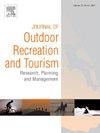Combining camera traps and artificial intelligence for monitoring visitor frequencies in natural areas: Lessons from a case study in the Belgian Ardenne
IF 4.4
3区 管理学
Q1 HOSPITALITY, LEISURE, SPORT & TOURISM
Journal of Outdoor Recreation and Tourism-Research Planning and Management
Pub Date : 2025-01-17
DOI:10.1016/j.jort.2025.100856
引用次数: 0
Abstract
Visitor monitoring is essential for ecosystem management and the evaluation of ecosystem services. However, in natural areas without entrance fees and with scattered entry and exit points, this task can be challenging, costly, and labor-intensive. Camera traps can provide both quantitative and qualitative data on visitor frequencies, profiles, and activities in these remote areas. Manual image analysis, however, is time-consuming when dealing with large datasets. In this study, we analyzed more than 700,000 images collected by nineteen cameras over a year on hiking trails in the Belgian Ardenne. Consistent with recent studies, our research demonstrates that the use of a convolutional neural network (CNN) can achieve accurate and promising results in detecting and classifying people and non-people (dogs, bicycles). Nevertheless, automatic processing entails the risk of multiple counts of the same individuals, depending on camera’s position, technical characteristics, and the time intervals between photos. This paper discusses the limitations and potential improvements of the monitoring methodology, from camera setup to data analysis. It concludes by the added value of this approach for the management of natural areas.
Management implications
The integration of AI with camera traps offers a practical and scalable solution for natural areas management by providing accurate data on visitor frequencies and behaviors. This approach can help site managers optimize visitor flows, reduce the impact of human activities on vulnerable ecosystems, and address user conflicts. It also supports sustainable tourism by informing decisions related to infrastructure, conservation priorities, and visitor access. Additionally, the flexibility of this method allows for site-specific adaptations, ensuring that monitoring efforts are aligned with management objectives while maintaining data transparency and privacy protection.
结合相机陷阱和人工智能来监测自然区域的游客频率:来自比利时阿登地区案例研究的经验教训
游客监测对生态系统管理和生态系统服务评价至关重要。然而,在没有入场费的自然区域和分散的出入口点,这项任务可能是具有挑战性的,昂贵的和劳动密集型的。相机陷阱可以提供这些偏远地区访客频率、概况和活动的定量和定性数据。然而,在处理大型数据集时,手动图像分析非常耗时。在这项研究中,我们分析了19台相机在一年多的时间里在比利时阿登的徒步旅行路线上收集的70多万张照片。与最近的研究一致,我们的研究表明,使用卷积神经网络(CNN)可以在检测和分类人与非人(狗、自行车)方面取得准确而有希望的结果。然而,根据相机的位置、技术特点和照片之间的时间间隔,自动处理可能会对同一个人进行多次计数。本文讨论了监控方法的局限性和潜在的改进,从摄像机设置到数据分析。最后总结了这种方法对自然区域管理的附加价值。管理意义人工智能与相机陷阱的集成通过提供游客频率和行为的准确数据,为自然区域管理提供了实用且可扩展的解决方案。这种方法可以帮助网站管理者优化访问者流量,减少人类活动对脆弱生态系统的影响,并解决用户冲突。它还通过为有关基础设施、保护重点和游客准入的决策提供信息,支持可持续旅游业。此外,此方法的灵活性允许针对特定站点进行调整,确保监控工作与管理目标保持一致,同时保持数据透明度和隐私保护。
本文章由计算机程序翻译,如有差异,请以英文原文为准。
求助全文
约1分钟内获得全文
求助全文
来源期刊

Journal of Outdoor Recreation and Tourism-Research Planning and Management
HOSPITALITY, LEISURE, SPORT & TOURISM-
CiteScore
6.70
自引率
5.30%
发文量
84
期刊介绍:
Journal of Outdoor Recreation and Tourism offers a dedicated outlet for research relevant to social sciences and natural resources. The journal publishes peer reviewed original research on all aspects of outdoor recreation planning and management, covering the entire spectrum of settings from wilderness to urban outdoor recreation opportunities. It also focuses on new products and findings in nature based tourism and park management. JORT is an interdisciplinary and transdisciplinary journal, articles may focus on any aspect of theory, method, or concept of outdoor recreation research, planning or management, and interdisciplinary work is especially welcome, and may be of a theoretical and/or a case study nature. Depending on the topic of investigation, articles may be positioned within one academic discipline, or draw from several disciplines in an integrative manner, with overarching relevance to social sciences and natural resources. JORT is international in scope and attracts scholars from all reaches of the world to facilitate the exchange of ideas. As such, the journal enhances understanding of scientific knowledge, empirical results, and practitioners'' needs. Therefore in JORT each article is accompanied by an executive summary, written by the editors or authors, highlighting the planning and management relevant aspects of the article.
 求助内容:
求助内容: 应助结果提醒方式:
应助结果提醒方式:


